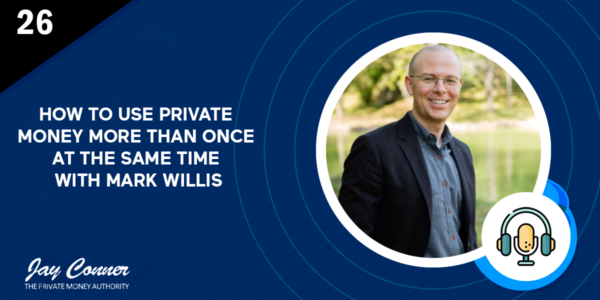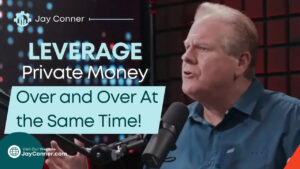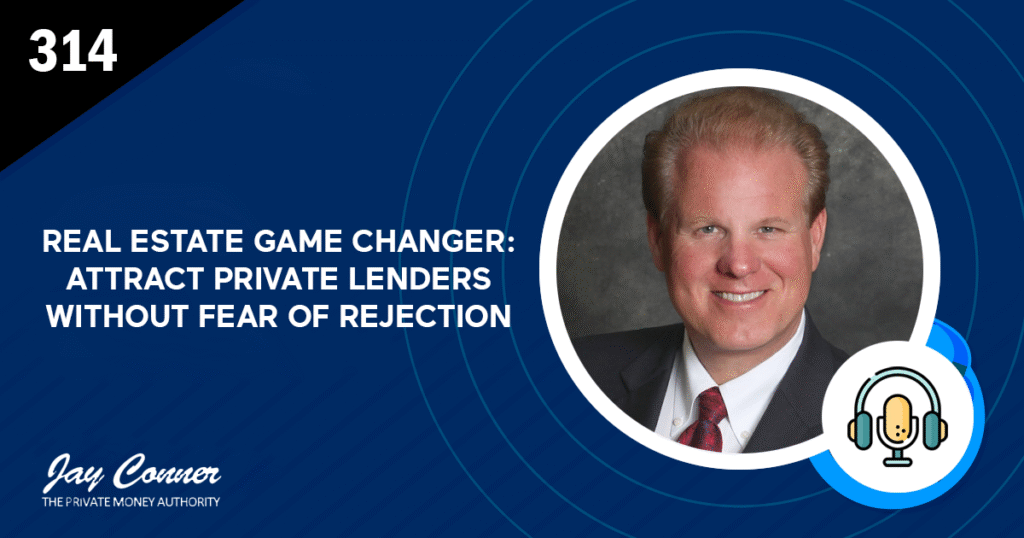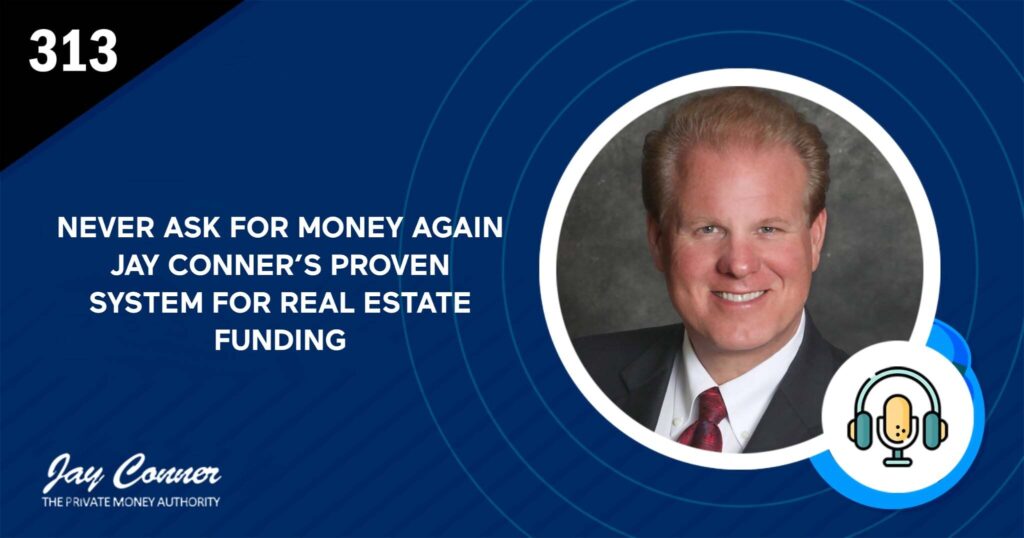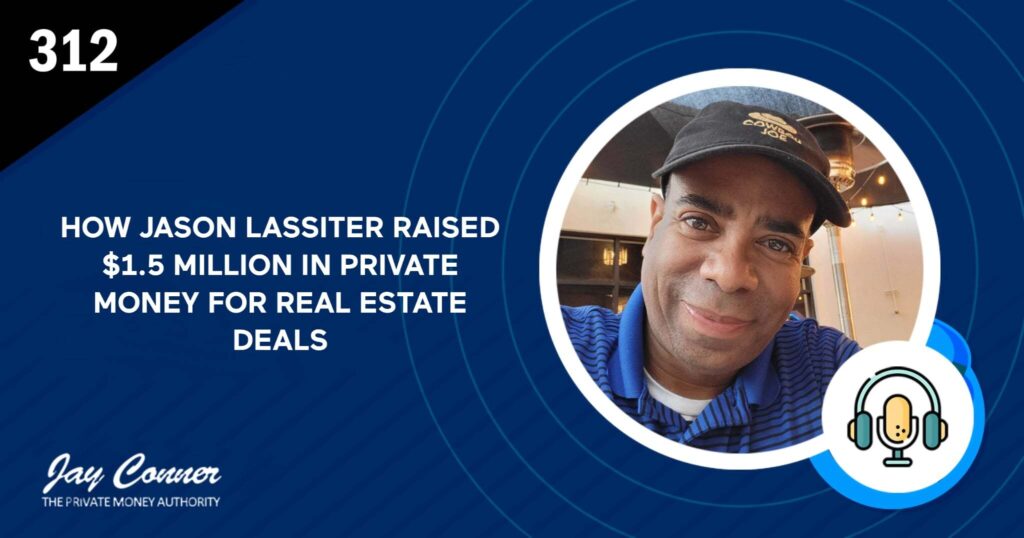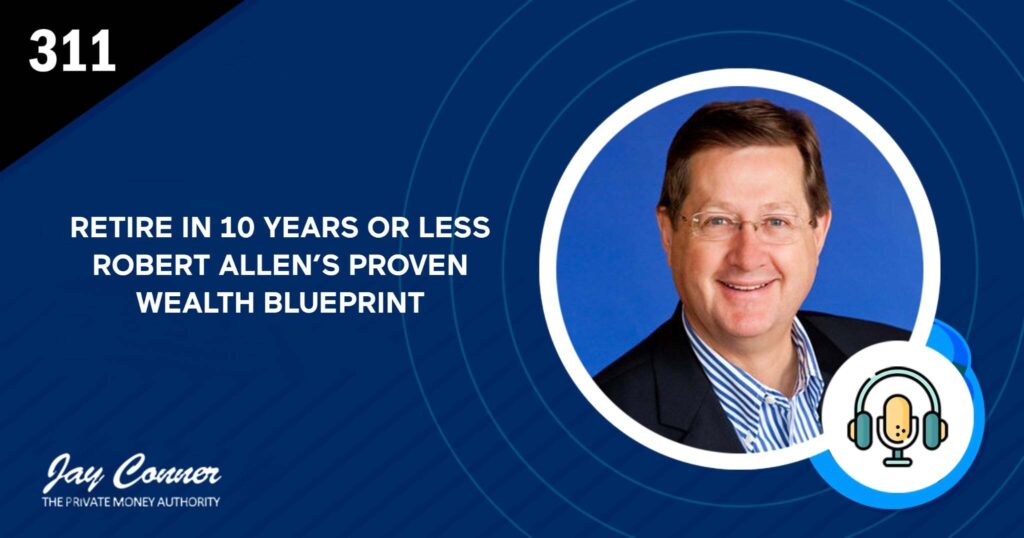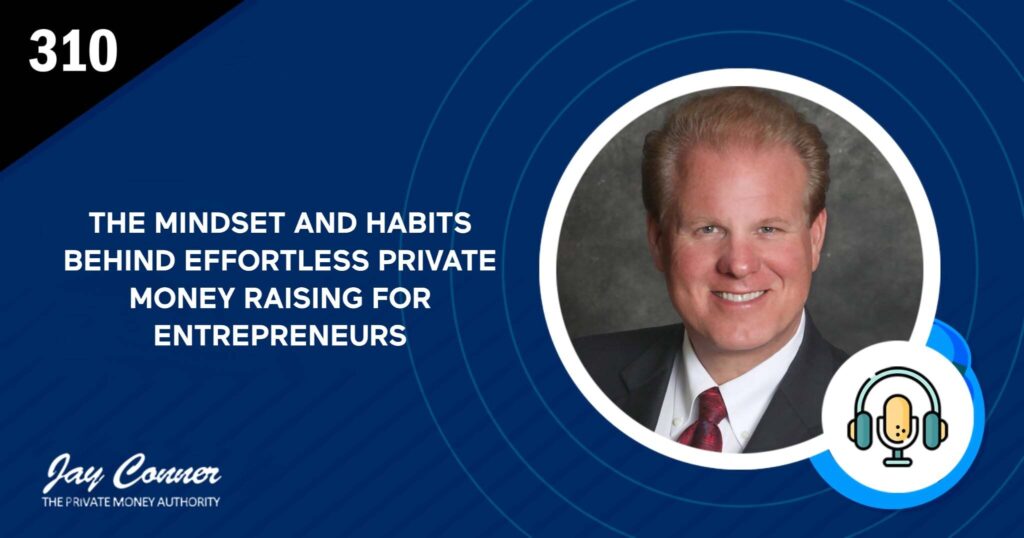Raising funds for real estate investments can be a daunting task, but private money offers a solution to the difficulties of securing loans from traditional financial institutions.
Welcome to Raising Private Money, where we explore the world of private financing for real estate deals. Today, we have a special guest, Mark Willis, a certified financial planner with extensive experience in private money transactions. Mark works with both real estate investors looking to fund their deals and individuals interested in becoming private lenders.
Join us for a unique opportunity to gain a new perspective on private money and learn how you can use it to grow your business. Don’t miss this informative episode with Mark Willis.
Key Takeaways:
- How Mark Willis’s service differs from other financial planners.
- Private money is defined by a financial planner.
- Investors and their purposeful ignorance.
- Why private lending is a better financing option for real estate investors over traditional lending.
- How to come up with cash using a life insurance policy, and if it can work using retirement funds.
- What kind of individual would be a great fit for a financial planner like Mark?
- The concept of Infinite Banking.
Check out my book: 7 Reasons Why Private Money Will Skyrocket Your Real Estate Business and Help You Build Incredible Wealth!
Get it here for FREE: www.jayconner.com/moneyguide
Connect with Mark
Website:https://kickstartwithmark.com/
Timestamps:
0:01 – Raising Private Money with Jay Conner
1:18 – Today’s Guest: Mark Willis
1:58 – Not Your Average Financial Planner!
3:55 – What Is Private Money?
5:30 – We Have To Be Our Own Financial Planners
7:26 – Private Money Is A Win-Win Scenario
9:15 – Private Lender vs. The Bank
14:15 – Jay’s Free Money Guide: https://www.JayConner.com/MoneyGuide
15:15 – The Bank On Yourself System
22:33 – Do You Need A High Credit Score?
23:32 – Can You Use Your Retirement Funds On The Bank On Yourself System
29:46 – What Is A Good Client?
31:44 – Connect With Mark Willis: https://www.KickstartWithMark.com
32:19 – What Is Infinite Banking?
How to Use Private Money More Than Once at the Same Time with Mark Willis
Mark Willis (00:00):
So private money has become a really great way for us to put funds together, whether it’s syndication or something else, and see that money due saying something that can hopefully beat what the markets, the public markets can do. I, actually refer to the public markets as the amateur retail investment products that you can find at the mall. Don’t overpay for your investments as you do at the mall. Instead, go direct.
Narrator (00:26):
If you are a real estate investor and are wondering how to raise and leverage private money to make more profit on every deal then your and the right place on raising private money. We’ll speak with new and seasoned investors to dissect their deals and extract the best tips and strategies to help you get the money because the money comes first. Now, here’s your host, Jay Connor.
Jay Conner (01:04):
Are you struggling with how to grow your real estate business or how to raise private money? Or how about struggling with how to feel in control of your business? Well, if so, you are going to love my guest today. My guest today is Mark Willis. And Mark is a certified financial planner that works primarily with real estate investors who want to borrow private money for their deals, and he also works with individuals who want to be private lenders. Now, in today’s episode, you’re going to learn not only about private money for your real estate deals but also about a very little-known strategy called infinite banking, which will put you on the fast track to enjoying exponential returns and creating wealth if you want private money for your deals. Don’t miss a second of this episode. Let’s dive in right now. Well, hey there, mark as I, as I said you are unlike any other guest I’ve had here on raising private money. I’m so excited to have you on. You’re a certified financial planner, but how is it that you are a certified financial planner? As I said, unlike any other certified financial planner.
Mark Willis (02:19):
Well, thank you, Jay, and thanks for having me on. Yes. I’ve had the great privilege over the last decade-plus of helping clients take back control of their finances. I’ve worked with real estate investors, private money lenders business attorneys, and more, and even N F L Super Bowl champions. But, you know, honestly, most people I work with just want some more certainty, some more agencies, some more confidence that they can reach their financial milestones in their own personal life or in that in the, of their family without taking a bunch of unnecessary risks. The world this year has been fairly fraught with I think a lot of turmoil and tumult and uncertainty. And so when people tell me, mark, I just feel like I’m a tennis ball floating down the gutter of life, I can understand how they feel. And so part of our game, part of our goal, part of our focus is to help people move upstream financially and, and just get back the control that they wanted in the first place with their finances. So I’m glad to be on.
Jay Conner (03:18):
Well, I’m glad to have you. I know everybody wants to know about that. And we’re gonna be talking in this show about unknown strategies that most people don’t even know exist. We’re gonna talk about this concept that you call infinite banking. And then in addition to that, thank you, Ms. Brenda. In addition to that we’re gonna start out talking about this world of private money, and how it is that you help real estate investors in the raising of their private money or after they’ve raised it. So let’s make sure we’re all on the same page here. What is your definition of private money, mark?
Mark Willis (04:00):
Well, it’s the individual collective. Basically, it’s a bunch of individuals with an interest or an intent to do a specific task together and to do that necessarily outside of the public markets. So I’m not a huge fan of Wall Street. It’s never, you know, given me a leg up. I would say it that way. And I don’t see it really helping the plight of the average investor. The third-party research is in according to Delbar, which is a third-party rating, a rating and research agency over the last 30 years, Jay, the real return of actual investors who had all of their money tied up in equity stocks basically got a whopping 3.6% over 30 years. And that includes the 1990s. That includes the bull markets of the last 20 or 30 years. And yet we still only have a 3.6% real rate of return, and that’s before taxes.
Mark Willis (04:58):
So I’ve never been a fan of the public markets, and at least not with the vast majority of my client’s savings and investments. So private money has become a really great way for us to put funds together, whether it’s syndication or something else, and see that money do saying something that can hopefully beat what the markets, the public markets can do. I, I actually refer to the public markets as the amateur retail investment products that you can find at the mall. Don’t overpay for your investments as you do at the mall. Instead, go direct.
Jay Conner (05:31):
One thing you just said reminded me of one of Warren Buffett’s investment strategies or criteria, and that is Warren Buffet said decades ago, he never invests in anything or any company that he doesn’t understand. And would you agree, mark, that when someone is investing, say in a mutual fund or a, or stocks or whatever, and all probability, they really just don’t, most people just don’t know much about the companies or the business that they’re investing their money in?
Mark Willis (06:09):
Yeah, we’re in a huge bubble when it comes to index funds and ETFs exchange-traded funds. I would say that there’s actually more in those funds than there are in all of the stocks in the stock market, which is an incredible statement to sta to say, but it’s the idea of, of feigned and purposeful ignorance where, hey, I don’t know which stocks to buy, so I’m just gonna go dump it in an index fund or a target, or even worse, a target date fund. And then the advisor who is just basically hitting a button, something a monkey could do is getting a fee off of that and off of your back, according to the Department of Labor fees themselves account for taking over a 35-year period, which is the time most people are investing, you know, their working years plus their retirement at least 35 years, that, that represents a 1% fee on that account represents 27% of your money just poof, gone to the monkey pushing the button to buy and sell that index fund once over a 10, 20, or 30 year period. That’s an incredibly large amount of wealth just vaporized due to fees. So no, I’d say, yeah, we have to be our own financial planners. There are no more excuses because either you’re gonna have a financial plan for your money or somebody else will,
Jay Conner (07:27):
You know, in contrast to the stock market and agreeing with what you just said in contrast to the stock market, an individual, a human being just like you and me when they become a private lender, then first of all, the way I do private money you know, syndication, they’re investing in a fund. The way I do private money is I primarily focus on single-family houses here in Eastern North Carolina. And when that private lender invests their money, they know already what their return is gonna be. If you invest in the stock market, they have no idea what your return is gonna be. Also, the way we structure our deals with private lenders knows that there are no fees, and there are no commissions that come outta their investment. So, Scott, I need you to come to the forefront. We got a lot of bad feedback going on here.
Jay Conner (08:24):
Did you hear that, mark? Okay, that was, that was just on my end. All right, very good. So anyway so the private lender in this world of being a private lender knows what that return is going to be, and they don’t have to worry about any value of their principal investment amount, anything being taken, you know, out of that, in contrast to the stock market, I tell people all the time, mark, private money is a win-win scenario. It’s a, it’s a big win for the real estate investor that is borrowing private money. And that list is long. I’d like to hear your list. I know what my list is, and my listeners have heard my list before. And there’s a, you know, there’s a long list of wins as I just sort of alluded to for the private lender from your experience in observations, mark, first, let’s talk about the real estate investor and the benefits to the real estate investor using private money to fund real estate deals versus using institutional money.
Jay Conner (09:23):
And by the way, Mark, when I say private money, I’m not talking about hard money. I’m not. That’s because hard money is institutional money. as we know, a hard money lender is, most of the time a broker of private money that’s going on and already raised the private money. And by the way, nothing against hard money lenders. I’ve got really, really good friends that have got their own hard money brokerages, and they’ve actually used my techniques to go raise private money for their hard money brokerages because it’s all the same money, whether you’re raising it for yourself as the real estate investor or you’re raising it for a hard money lender you know, for the brokerage. But anyway from your observations and experience, mark what’s on your list. What’s on the bullet point list of why a real estate investor would prefer to use private money borrowing from individuals versus the bank or any kind of institutional lender?
Mark Willis (10:17):
Well, I love the question, and look, you know, debt and banking have been in existence for thousands of years. There’s literally, literally a great book called Debt the First 5,000 Years by David Graber, and the book title says it all. And our modern incarnations, of the banks that we all know and understand today are relatively recent, but banking has been a function of human society since caveman days. So I love it when I can find a way to bring the banking function, the verb of banking away from the nouns of banks, and back to the u and my level, let’s bring the function of banking back into the personal one-on-one. There’s a number of different advantages, you know, one, there’s no a lot less overhead, and two, there’s a lot more humanity baked right into the conversations and the contracts that we’re setting up with our if, if you’re a private money lender, the people that you’re lending your money out to.
Mark Willis (11:17):
So if we can find a way to become that banker, if we can become our own source of financing and crucially the sources of financing for all of the people who would like to, you know, borrow our money for a while, then yeah, you get the advantages of the stream of income from the mortgages that you’re receiving. You get the taxes, tax advantages, you get you to know, the capital appreciation on the asset underneath everything, and you bring back control of the banking function, which all of which is I’m just cheering that on as a certified financial planner. Again, I can either choose for my client’s retail products, wholesale products, or direct products, and it’s just like the mall. You either wanna overpay for your retail products that have been marked up, whether it’s through the mall or through a bank, or do you want more wholesale and direct products that you can get access to that are a lot more efficient, that are typically not available inside your 401ks and IRAs, but are, you know, absolutely where the very affluent have, you know, been able to build their wealth for generations.
Jay Conner (12:26):
Yes. I couldn’t agree with you more. You, said a phrase just a moment ago, and well, a word in the word you used Mark was controlled, right? And, and I tell, I tell people all the time especially new real estate investors, you know, when I was borrowing money from the banks, they made the rules. They set the interest rate, they set the frequency of payments all that. And in this way of you doing private money, I mean, I was able to raise $2,150,000 in less than three months when I lost my line of credit at the local bank. But, you know, when I was borrowing money from the bank, they made all the rules. And, and one thing that I had to get straight in my mind, mark, was, was the mindset, right? This mindset of raising money.
Jay Conner (13:14):
Of course, the worst time to raise private money is when you need it, <laugh>, right? Yeah. So particularly with my one-offs and, and, in my real estate, in my single-family houses, I teach and practice all the time. The money comes first getting the money lined up, you know, I’ve got some good friends that teach, oh, just get the deal under contract, the money will show up. And I go from where is the money gonna show up, right? I mean, I just think how much more confident and how many more offers a real estate investor is gonna make when they know they’ve got private money already lined up, verbally, pledged, ready to go, ready to be deployed, versus making an offer on a property, and then you really don’t even know where the funding is coming from. So let’s dive a little deep, mark. My next question I’m gonna ask you that I don’t want you to quite answer yet, so I’ll just tee you up.
Jay Conner(14:02):
The next question is I want to learn and our listeners to learn exactly how you work and what servers you provide for real estate investors that are raising private money. But before you answer that question, I wanna give everybody a free gift. Mark, I’m so excited about the recent private money guide that I wrote that is free and downloadable. It’s called Seven Reasons Why Private Money will Skyrocket Your Real Estate Business and Help you build Incredible Wealth. And I tell you, if you’re listening to this show and you want more funding for your deals with you making the rules, download this free guide cuz it’ll get you on the fast track to getting private money. You can download it for free at www.JayConner.com/MoneyGuide. Download that to get on the fast track to private money and actually having a big problem having more money than you could actually use to invest in real estate. So, back to the question mark. What, is the service specifically that you provide for real estate investors that are using private money?
Mark Willis (15:24):
Well, I’ll tell you a story and I’ll answer it with a case study here. So, a gentleman who was in his early forties had a good chunk of money from a recent walk away, from a recent syndication that he walked away with, and he wanted to start doing some private money. So he found a really, really nice investor, a real estate guy who wanted to invest. He had $400,000 in his pocket, this private money lender. And he said, all right, I can either just give this guy some money and then he’ll go do with it whatever he does with it and hopefully gets a nice return. Or I can work with Mark to set up what we call a bank on yourself, designed whole life policy. And that’s what we did. We set up a whole life policy with a $400,000 lump sum, drop that money in, it’s a single premium drop-in, and this guy had still a large chunk of cash available immediately, and by immediately, I mean within about 30 days of starting the policy, he was able to access the cash in that policy and borrow out a large portion of it to the tune of about $360,000.
Mark Willis (16:26):
He borrowed $360,000 against this life insurance. Now, for a lot of folks who might not be familiar with this, I’ll, I’ll do a quick recap. Whole life insurance that’s designed the bank on yourself way allows your policies cash to grow guaranteed every single year. Second, money is liquid and accessible. Just like I just told you, that gentleman, was able to access that money, and much of that cash value was immediately available to him. He put in 400, he could get back out 360,000, and maybe most intriguingly, the policy’s cash will continue to compound and grow even on the capital we borrowed. Like we never touched a dime of the money. So back to my story and I’ll wrap it up and pass the ball back to you there, Jay. This guy has a $360,000 loan that he just borrowed against his life insurance.
Mark Willis (17:15):
Why the heck would he do that? Well, remember the policy’s compounding and growing on the entire cash value, even on that money that he borrowed out. So he puts that money to work and over an eight-year period, our plan is to have that money come back to him through the investors and so forth, and his policy will continue to grow and compound. We did the math on this. Without him putting any more premiums or any more money into this policy, the cash will go up by almost $107,000 by itself. So from 400 grand to $507,000. Now he, he borrowed against the policy and some people might say, well, mark, wait a minute, there was a loan against that. What happened there? And yes, there’s loan interest that you would pay when you borrow against life insurance, but here’s where it gets interesting and then I’ll pass the ball back to you.
Mark Willis (18:03):
The loan interest over an eight-year period was about 2%. The annual percentage rate was about 2%. So he paid about $50,000 to borrow that money. But remember the cash grew by $107,000. So just to summarize, this gentleman had a $400,000 problem. What do I do with this money? He could have just put it into the investments doing his private money lending, or he could put into this life insurance, borrow it out, still get the growth on the policy of $107,000 and he can get the minus, the loan interest. So he is still positive arbitrage $57,000 there, and he gets whatever the investments that he is invested in would perform in the first place. So for me, it’s a great way for our private money lenders to get some additional yield without any additional market or real estate risk.
Jay Conner (18:59):
So in that, in using that strategy, the private lender is leveraging their cash in more than one way simultaneously. It’s like instead of taking that 400 grand and loaning that out on a real estate deal to the real estate investor doing this strategy that you just described, allows them to still loan out 90% of what they would’ve loaned out to the real estate investor, earn that money and then simultaneously be making money on the, is that the cash value growth of the life insurance policy?
Mark Willis (19:44):
That’s great. That’s exactly right. You get a plus on the vocabulary test. That’s exactly what it is. It’s the cash value of the life insurance policy. Yes sir.
Jay Conner (19:52):
And then there’s a third benefit that’s happening sim simultaneously in the unlikely event hopefully, that the owner of that life insurance policy passes away, then the beneficiary of that policy is still going to get paid out as a beneficiary. So there are really three big benefits to using that strategy or two additional benefits to using that strategy versus just being a straight private lender.
Mark Willis (20:23):
The death benefit in this example was a little over $1.5 million. So you’re exactly right. There’s that incredible gift to the family. And I should mention very quickly that the money doesn’t stop when he gets paid back in the eighth year, remember the policy is now it’s increased in value, it was 400,000, and now it’s 507,000. Well, he decides to just keep repeating this process throughout his life on our, on our charts here. So he keeps doing it and every year the policy remains enforced, it gets more and more efficient. So he does this again now the, in the 10th year he takes another loan from the policy, now it’s a $550,000 loan. Remember, this is, a loan against your own life insurance policy and there’s no begging a bank to get access to that money. Well, I don’t have to fill out a long long list of paperwork.
Mark Willis (21:13):
He borrows $550,000 and it’s usually deposited within about a week or two into the bank account. So you can still be cash, you know, angel investor or private money lender, whatever you wanna do there. Over the same now eight-year period from year 10 to year 18, cash now went from $550,000 to $734,000. That’s almost three-quarters of a million bucks. And so the arbitrage continues to accumulate on this guy’s you know, on his investment in the real estate of course, but also in the, and in the investing in the investors, but also in the life insurance itself. So I guess I just see it as an ever-increasing, ever-more efficient tool. And I’ll just say briefly that banks are some of the biggest purchasers of this asset class. They use their tier-one capital. They’re, they’re actually required by F D I C in the government to put a large chunk of their money into various safe assets and banks buy as much cash value life insurance as they’re legally allowed to buy, which is in the hundreds of billions of dollars. So if banks are doing this, my question is, if the banks are buying this for their lending, why aren’t we as private money lenders,
Jay Conner (22:28):
Well, it sounds like a no-brainer to me. Now, does someone’s credit score play in at all to them borrowing against their whole life insurance policy?
Mark Willis (22:40):
Yeah, thankfully, no. It’s a private transaction between you and the insurance company. So there’s no relationship to your credit score. And there’s no approval process except, Hey, how much do you want? And what bank account should we send it to? That’s really the application process for your loan.
Jay Conner (23:04):
I love it. I love it. Mark, I’ve got a question that I do not know the answer to most of the time when I’m interviewing someone on the show. I pretty much know the answer to the question. My producer and I, I think we’ve done over 400 episodes so far, but I got a question for you that you’re gonna know the answer to. I don’t know the answer. Here’s the question. Well, before I give you the question, lemme just lay a little bit of a foundation in the world of private money that myself and my students practice in self-directed IRA companies are a big part of the equation. Now let me explain myself to someone that may not understand what I’m talking about. A self-directed IRA company, also known as a third-party custodian, is a company that’s been approved by the I r s that allows someone such as yourself that you can take an existing retirement fund or a portion of it, it could be a current pension you have, it could be a 401K from a previous employer.
Jay Conner (24:15):
Actually, it could be a portion of your 401k at your current employer, depending on how long you’ve been on the job without an employer and what your plan administration or administrator allows if for you to pull out any of that retirement funds. But regardless of where you retire, you may have retirement funds that have been tagged by the IRS as retirement funds. You may have those invested in the stock market regardless of where you have retirement funds. The IRS allows you to move penalty-free and tax-free that retirement money over to a self-directed IRA company. I endorse Quest Trust outta Houston, Texas. I get my deals funded in three days with my private lenders that have retirement funds that have moved their retirement funds over to a self-directed IRA company such as Quest. And then they can loan money out depending on the type of retirement account they have, either tax-deferred, at least tax-deferred, or tax-free.
Jay Conner (25:12):
For example, if they have a Roth IRA retirement fund that they’ve moved over to that self-directed IRA company. So Carol Joy, my wife, and I, we’ve got 44 private lenders right now funding our deals, and over half of them have moved their retirement funds over to Quest and then they fund our deals from that account. Again, earning tax, deferred tax-free income. We’ve got one private lender that earns $65,000 in one-year tax-free by using that strategy. So, Mark, I set all that to lead up to my question, and here’s my question that I do not know the answer to. Can someone use retirement funds to employ this strategy of investing the retirement funds in a whole-life policy and then loaning it out?
Mark Willis (26:06):
That’s a great question and we get this question quite a bit. Now, of all the things you can put inside an IRA and you could probably list more than I could in, including gold, including crypto real estate, you can do just about anything except life insurance. Now, some people, wow, who are spot on and pretty keen like yourself, might realize that there’s something about life insurance that the government doesn’t want us to have in a tax-qualified plan. You can do almost anything except life insurance inside an IRA or 401k. Now, there are a lot of tinfoil hat theories as to why that might be, and I’ll leave that for another podcast maybe. But what I can tell you is that there are a number of prohibited transactions inside tr self-directed IRAs. Gentlemen thought he was buying his retirement home inside his ira, so he used his IRA to buy his retirement home since it was a retirement account, the IRS didn’t like that.
Mark Willis (27:05):
They called it a prohibited transaction and the entire balance became taxable with a penalty in the one year that they caught him doing that. So this is just one example of a prohibited transaction that IRAs have. I like self-directed IRAs. I think they’re a step in the right direction and they do a lot of really good for our real estate investing and our private money lending as well. What I have found is that many people want the tax-free nature to continue into their retirement. And unless you have a self-directed Roth ira, all of the advantages of that tax-free nature of buying you, you know, real estate deals or doing your private money lending, it will then be a tax time bomb as it comes back to you in your retirement years as you take money out of that traditional 401k or self-directed ira. So what I have found is, in addition to your self-directed accounts, I like to diversify the overall asset class here and put some money outside of government-sponsored qualified plan plans in something like life insurance.
Mark Willis (28:05):
Life insurance is not a qualified plan and it’s, you know, it’s honestly, it’s, there are no prohibited transactions. I can fix up my kitchen or I can invest in some real estate, or I can lend money to Bo Bob and Susie over here and I can do whatever I want with this money. And the government has no say in what I do with that cash and there’s no one looking over my shoulder whenever I use the money for sending my kid to college or Disney World, they don’t care what I use my money for. And in retirement, if I’ve designed the policy properly, the policy’s cash can come back to me with no income tax due. That’s really important. If we think taxes are gonna go up in this, in this country, I want a stream of tax-free income. I’ll tell you a quick story and then I’ll again pass the ball back to you Jay.
Mark Willis (28:51):
I just got off the phone this morning with someone who’s setting up one of these policies. She’s able to pack away 85 grand a year into one of these policies and she does quite a bit of real estate investing and some private money lending as well. She’s gonna use the policy to invest in these different opportunities as she goes through her life and in retirement, she’ll be able to pull six figures of tax-free money out of her life insurance with again, no taxes due under the current tax law. And not to mention she’s got the liquidity for the next several decades as she gets ready for retirement to use for anything that she wants to use the money for with no red tape, no government-prohibited transactions.
Jay Conner (29:33):
I love it. I love it. Mark, you and I are going to continue our conversation after this show offline cause you have really piqued my interest and you’ve got some really intriguing strategies going on there. So let me ask you this question mark, and then I want you to give out your contact information, what type of person, what, what type of person would make a good client for you. And then when someone hears you give that answer, then they will know that they could be possibly a good fit to talk with you and continue the conversation.
Mark Willis (30:09):
Well, thank you. Then, I think there are the right fit people and then there’s really, this is not a good fit for just everybody. So I’ll be quick to say that even though it’s a great tool, it’s not the only thing that we do at our firm at Lake Growth Financial Services and it’s not the right fit. If you, for one need a triple-digit rate of return inside the life insurance in the first few years, it’s not gonna happen. It’s a slow, steady, linear, predictable growth in the middle single digits or, or, you know, as it as inflation predicts it looks like that might be going up, but it’s in the middle single digits. It’s pretty typical for the rate of return. So this is not a, you know, get rich off the life insurance rate of return. That’s not what this is about.
Mark Willis (30:50):
It’s about other things that we’ve been describing today, Jay. And second, you gotta be able, to live within your means. You know, we really cannot put money that we don’t have into a life insurance contract. There’s a few, you know, I think pieces to that puzzle that you’d wanna work out first if you don’t have two pennies to rub together in terms of being able to use this strategy to your advantage. All right? So with that in mind that would be some of, the things not to be. Now, those that want more control, who want to have only positive feelings when they open up their account statements every year, no more negative numbers or ugly surprises due to market volatility. If you want some tax advantages or diversification of your tax strategy in retirement, if you want to be able to have liquid buckets of money that you can draw on both for emergencies or lending opportunities, we can help just reach out to us. , I guess the best website to reach us is@kickstartwithmark.com. That’s a kickstart with Mark with a k.com, and we can sit down for a 15-minute phone strategy session, answer your questions about this strategy and see if it’s a good fit.
Jay Conner (32:03):
That’s awesome, mark. Well, let’s give all of our listeners a bonus here in just the next minute or two before we wrap things up. By the way, that’s www.kickstartwithmark.com. You may have already touched on this, but before we started to show you, we’re talking with me about this concept called infinite banking. What is the definition of infinite banking and have you already defined it, but you just didn’t call it that
Mark Willis (32:34):
Well, yeah, I’ll, I’ll tell you this. This is something that I have stumbled across. Again, as a certified financial planner, I’m constantly on the hunt for strategies, both for myself and also for my clients. I stumbled across something known as Infinite Banking a long time ago. Someone gave me the book and so forth and read up on that and it blew my mind. So I started looking for, well, where are the people who can set this up for me? This is before I really knew how to do it myself. Since then, we’ve now specialized in it. So I found that the words infinite banking had very little in the way of protection around what those words mean in the wild in the marketplace. And there are a lot of other knockoff brands out there too. We can call it legacy wealth, this and family banking that and, and cash flow this and, and there’s just a lot of nicknames out there.
Mark Willis (33:21):
And I’ve come to find that many people think they have a policy like you and I have been describing today. Infinite Banking uses a dividend-paying whole life insurance policy that we can borrow against, similar to what you and I have been describing on this show today, Jay. The trouble is that it can be engineered improperly. Let’s say it this way. I can get in something called an elevator and have no idea if the person who engineered that or services it has any kind of qualifications. It might just be, a death box. And if I push the button in that death box, I’m gonna fall to my, you know, to my demise. But if I get into an elevator that’s been properly engineered and designed by a certified technician, then all I have to do is push the button and up it goes.
Mark Willis (34:05):
All right? So there are no qualifications certifications out there that I’m aware of in this part of the financial universe other than the Bank on Yourself Professionals Training Program. It’s a certification program that sort of is the quality control around this concept. Everything else is essentially it’s, it’s a wild west for how the policies are engineered. People who thought they had a bank-on-yourself-designed policy have brought them to me and they ended up being an index universal life policy that runs out or runs out cash into their early retirement years. And they didn’t even know it and their agent didn’t know it either. That’s the problem. So that’s the bonus, is make sure that whoever you work with, that they are a bank on yourself professional, whether it’s me or someone else such as one of my colleagues who are in the bank on yourself, professional space.
Jay Conner (34:56):
Excellent advice. Mark. Mark, thank you so much for joining me here on the show. Great show great information. Again follow up on the conversation with Mark Willis at www.kickstartwithmark.com. Thank you, mark.
Mark Willis (35:13):
Thank you.
Jay Conner (35:14):
You got it. There you have it. I’m Jay Conner, The Private Money Authority. So glad you decided to tune in to Raising Private Money. I do need your help. And yes, if you have found this episode to be valuable, I would love for you to share this episode with someone else. In fact, if you’re listening to Apple Podcast in the upper right-hand corner there are three dots, be sure to follow the show so you don’t miss out on any other upcoming episodes. And if you happen to be watching on YouTube, be sure and hit that subscribe button and ring that bell so you don’t miss out. So be sure and join us here at the next show. I’m Jay Connor wishing you all the best in taking your business to the next level. And we’ll see you right here on the next Raising Private Money.
